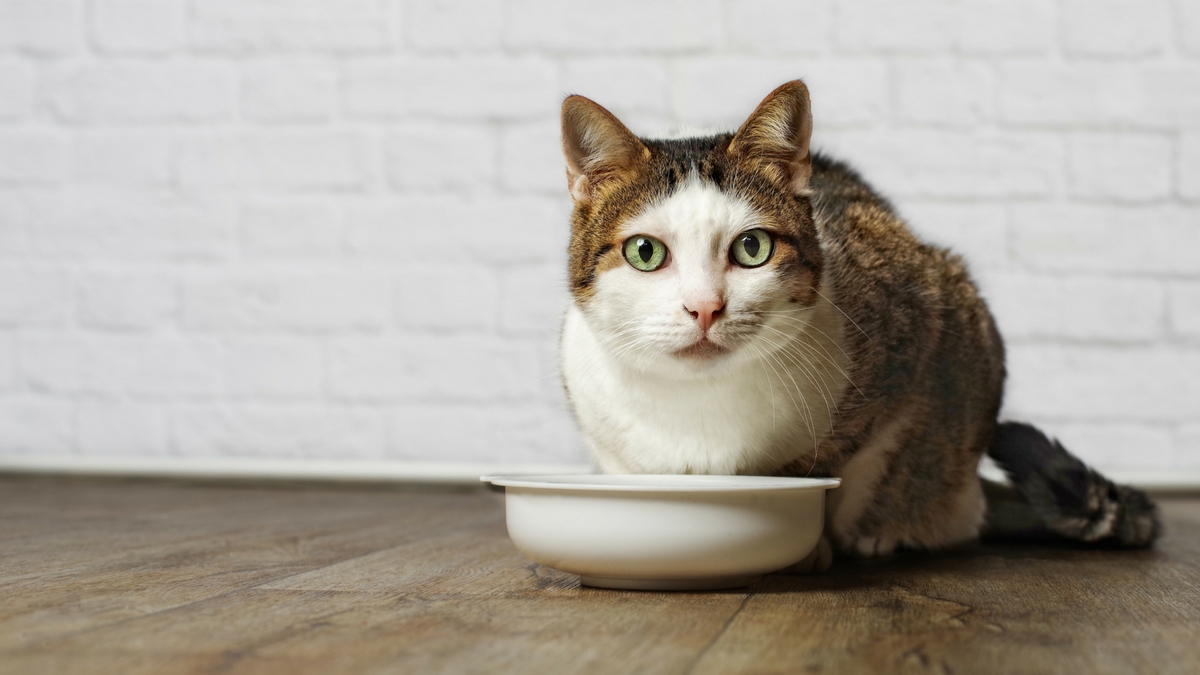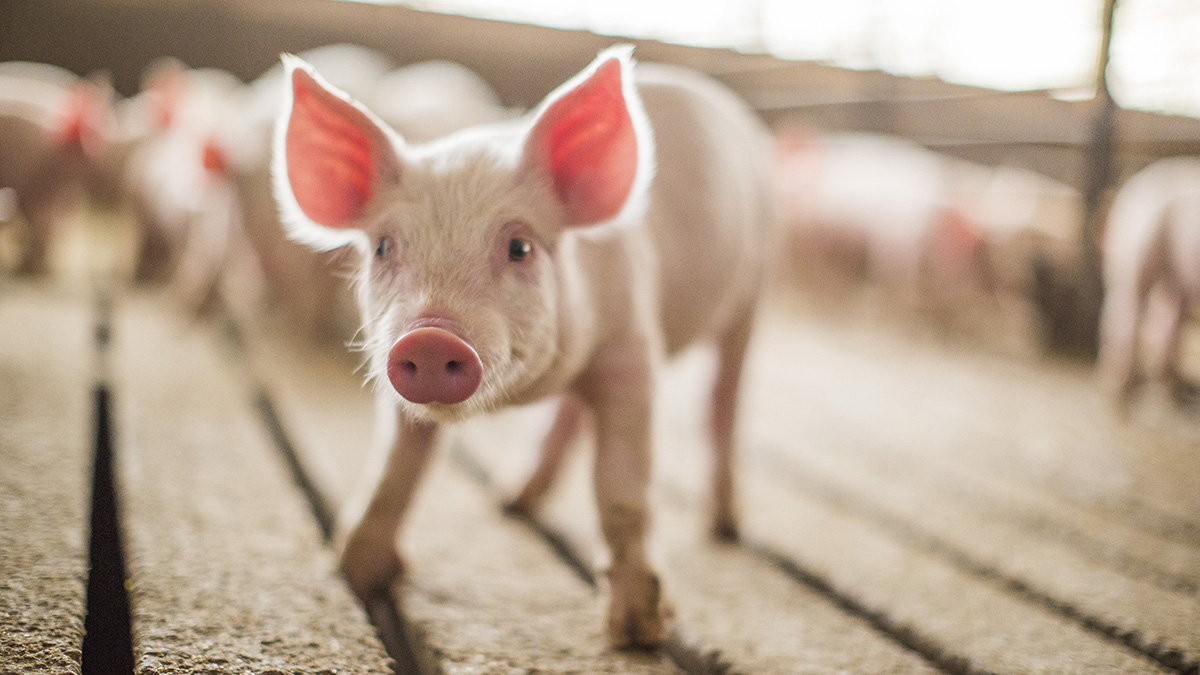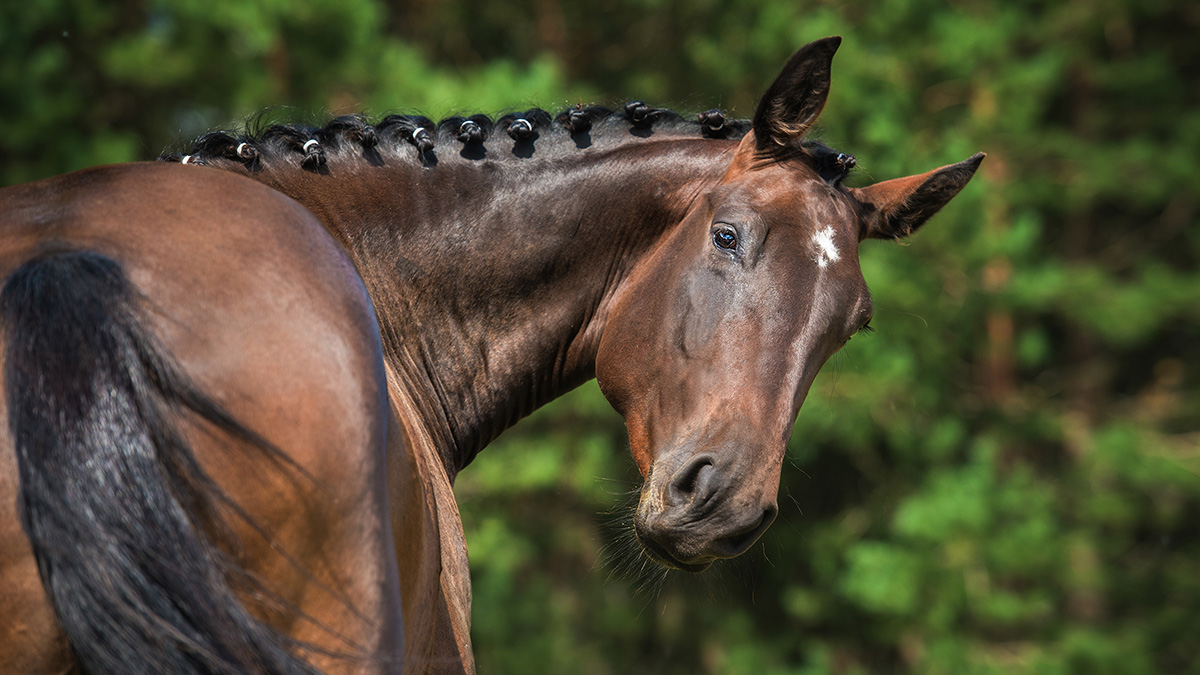“You are what you eat” might strike you with a bit of fear or guilt depending on what it is that you are munching at the moment. While the origins of this phrase are probably as old as mankind, fundamental research now supports the importance of eating the right things, at the right time, both in humans and animals.
Our genes are the blueprint that defines who we are. How genes express themselves in the presence of nutrition, to produce proteins, is called “gene expression.” The science that defines how we understand this interplay between what we eat and how our genes function is called “nutrigenomics.”
A small chip, representing all the genes in the tissue of the individual being examined, allows scientists to predict precisely what effects to expect from dietary changes by showing which genes are activated and deactivated (in other words, turned “on” or “off”).
Just over ten years ago, Alltech opened a first-of-its-kind facility dedicated to the study of animal nutrition’s impact on gene expression. This study of nutrigenomics has allowed scientists to determine what outcomes to expect from feeding specific foods, feeds and dietary supplements to animals without waiting the months or even years that are typical in traditional farm trials. Additionally, nutrigenomics is minimally invasive research, requiring little from animals, such as minor bloodwork tests.
Over the 10 years since the Alltech Center for Animal Nutrigenomics and Applied Animal Nutrition opened, nutrigenomics has been used to:
- Understand how specific foods and diet structures change gene expression.
- Quickly screen and identify new nutrients with similar benefits to existing elements of the modern livestock diet.
- Predict responses to novel nutrients or foods.
10 Nutrigenomics Breakthroughs
1. Truly Amaize-ing
Although considered “amazing” by some farmers who use it, Amaize® from Alltech was a product with an elusive mode of action.
Cattle and other ruminants rely upon their first stomach (the rumen) to break down fiber. Enzymes such as Amaize should help with this digestion process. Using traditional techniques, researchers demonstrated that adding Amaize resulted in carcass weight gain for beef and greater milk production in dairy.
Examining tissue samples using gene expression, however, added much more to the story. The enzyme’s impact on the animal’s metabolic system showed that Amaize optimizes animal growth.
Several key changes were noted in particular. Genes relating to the expression of insulin-like growth factor (IGF-1), insulin receptors and the growth hormone were affected positively. These genes all have a direct correlation to increasing metabolic activity and therefore body growth.
Nutrigenomics allowed scientists to precisely understand the true function of Amaize, making it possible to issue specific recommendations to farmers of how and how much to incorporate into their cattle’s diets to maximize production and profitability (primary scientist: Dr. Ronan Power, Alltech).
2. EconomasE: An economical alternative to vitamin E
In essence, EconomasE is an antioxidant supplement, demonstrating similar biological functions to vitamin E, but more economically.
Vitamin E is known throughout the world for its powerful antioxidant properties. Antioxidants inhibit the oxidation of other molecules, which can produce free radicals. Free radicals, unpaired loose electrons, cause damage to cells in the body. Generally, therefore, a person who consumes antioxidants will be healthier and in better shape to fight off illness, which is why doctors advise eating antioxidant-rich foods like leafy greens, nuts and certain berries.
Humans aren’t the only ones to benefit from antioxidants; all animals do, and this is why vitamin E is routinely included in the diets of all production animals. Vitamin E, however, is very expensive, and producers often seek ways to minimize its inclusion in their feed. The caveat is that reduction of vitamin E can increase the likelihood of requirement for antibiotics.
Using nutrigenomics, researchers were able to identify vitamin E’s mode of action and then set about identifying other compounds or combinations with similar effects. EconomasE proved capable of replicating the gene expression changes seen with vitamin E, and this was confirmed in 46 subsequent trials with poultry, swine and cattle. EconomasE maintained meat quality and the beneficial, protective antioxidative effects of vitamin E without the high price tag (primary scientist: Dr. Karl Dawson, Alltech).
3. Using zinc to facilitate development
Zinc is a trace mineral required by all animals to grow and develop properly. It supports immune function, allowing the animal to overcome immune challenges. In animals, through optimizing the immune response, it reduces risks associated with a severe infection known as necrotic enteritis (NE), which costs the poultry industry alone an estimated $5 to $6 billion globally and has mortality rates of up to 1 percent per day.
Necrotic enteritis is caused by the pathogenic bacteria family of Clostridium perfringens, resulting in lesions of the intestine that inhibit the absorption of nutrients, further weakening the sick animal and sometimes leading to death. In the last few years, scientists have been searching for ways to reduce the effects of necrotic enteritis in production animals such as poultry, pigs and cattle.
Nutrigenomics also confirmed that the form of zinc used is important. Forms such as zinc oxide and zinc sulphate that are typically used in animal diets, and in human supplements, are less effective than those connected to mixed peptides, which impact how the zinc is absorbed. Treating the animal in a holistic manner, supplying it with nutrients in the optimal form, enables that animal to be far better prepared to fight off potential infection, resulting in less antibiotic use and better efficiency of food digestion, both of which will save poultry producers (and consumers) billions of dollars annually (primary scientist: Dr. Daniel Graugnard, Alltech).
As recently as five years ago, a condition known as “woody breast” wasn’t even on chicken producers’ list of concerns. Now, it is credited with losses conservatively estimated at $200 million dollars in the U.S. and affects chicken producers in Brazil, Spain and Italy, amongst others. An affliction of the chicken breast, it results in tough, chewy and otherwise inedible meat.
While genetics certainly play a factor, woody breast is generally considered to be directly correlated to how fast producers grow their chickens. Consider that in 1930, the average chicken was slaughtered at 2.5 pounds (1.1 kilograms) and took 50 days to gain each pound of weight. Less than 100 years later, we grow chicken to 6 to 8 pounds live weight, and they can put on a pound every eight days!
At a scientific level, fast-growing chickens are being affected by hypoxia (low blood), increased oxidative stress, inflammation and an increase in fibrofatty tissue. From a consumer perspective, this results in chewy chicken and a generally unpleasant eating experience. However, understanding gene expression changes through nutrigenomics has enabled the development of a feed program that decreases the oxidative effects within the bird, resulting in normal tasting breast fillets for consumers (primary scientist: Dr. Rebecca Delles, Alltech).
5. Actigen: A stronger next generation of a proven success
For many years, Bio-Mos® has been a star ingredient in animal feed. It supported animal performance naturally by reinforcing the function of the digestion system and enhancing feed efficiency.
The challenge was that the nature of natural is variation: color, odor and particle size relating to the natural process of production. Producers wanted the benefits of Bio-Mos, but they wanted it to be more concentrated, make it more economical and make it traceable.
Nutrigenomic research quickly confirmed Actigen®’s similarities to Bio-Mos but also showed it to be 2.5 to five times more powerful.
Subsequent animal feeding trials later proved Actigen’s ability to help animals achieve their genetic potential. However, nutrigenomics confirmed its biological value much earlier, in a matter of weeks rather than months or years (primary scientist: Dr. Colm Moran, Alltech).
Epigenetics, or how an environment impacts the expression of inherited genes, is the next science that we expect will revolutionize the way we think of nutrition. In this case, what the parents ate, and what the parents of their parents ate, affects gene expression. And, it goes beyond nutrition. Studies have shown that overeating, undereating, exercise and smoking all have potential benefits or deleterious effects on future generations.
Pregnant sows at the world’s largest pig farm were fed Actigen during the last trimester and demonstrated epigenetic benefits. Tissue samples from their offspring exhibited gene expression changes suggesting stronger immune systems and enhanced nutrient uptake. So, as epigenetics suggests, feeding the mothers Actigen resulted in pigs that were much better off than those whose mothers did not receive it.
Healthier piglets will grow better, be more efficient, have stronger immune systems and less likelihood of disease infections/need for antibiotics (primary scientist: Dr. Kristen Brennan, Alltech).
7. Programmed nutrition: Conditioning gene expression
Within the lifetime of a person or animal, genes can be conditioned. In other words, we can design specific feeding regimes that prime the genes so that when a second diet is introduced, those genes express in ways that are more beneficial for the animal. This can be especially of benefit in the cattle industry, where cattle are bred and born in one location and often exchange hands three or four times.
Programmed nutrition shows that when newborn animals are fed supplements at specific levels and specific times, their bodies can better learn to utilize and retain these nutrients. As the animal grows, they become more efficient and require fewer nutrients than animals receiving excess supplements.
One example is EPNIX®. Part of a feeding program designed for genetic conditioning, the timing of feeding EPNIX to cattle is critical. It is a two-part process: the first part conditions the animal’s body to utilize nutrients better and the second part involves feeding the optimal nutrients.
EPNIX is a natural feed program that can positively improve cattle performance, meat quality and even reduce the environmental impact of beef farming (primary scientist: Dr. Vaughn Holder, Alltech).
Check out this podcast by Alltech research scientist Dr. Vaughn Holder to learn more about EPNIX.
8. In ovo feeding: Feed the egg before the chicken
Typically, the time from when an egg is laid to when it hatches is 21 days, almost the same amount of time it takes the chicken to grow. So it’s not surprising that poultry producers are increasingly wondering what nutrition a chick receives inside the egg.
Using nutrigenomics, scientists can look at what happens when different nutrients are introduced into the eggs. When used correctly, in ovo (Latin for “inside the egg”) feeding methods can be a powerful way to improve the development and health of the animal.
Careful egg injections of tiny doses of water-soluble sugar called MR8, from a probiotic yeast, resulted in baby chicks with stronger immune systems at birth and more efficient digestive systems. Not only that, but their hatchability increased, with more chicks born and improved survivability in the first week. Additionally, nutrigenomics showed a more developed digestive system physiologically and structurally, giving the bird a strong head start when compared to chicks that didn’t get the sugar from the probiotic yeast.
Today, implementing in ovo feeding requires special machines for use in hatcheries incubating thousands of eggs. However, the technology is quickly emerging to make in ovo feeding a strong part of poultry nutrition’s future (primary scientist: Dr. Rijin Xiao, Alltech).
9. Serving salmon sans sea lice
Fish have never been more popular with consumers. As such, fish farming, or aquaculture, has become very important. In fact, more fish now come from farms than are caught in the sea. Yet, aquaculture presents its own challenges, including managing diseases and parasites. Sea lice alone cost the aquaculture industry an estimated $1 billion dollars a year. The threat of sea lice to salmon is not new, and salmon have developed their own protection by the secretion of a mucous layer encompassing its scales. This works, but when the sea lice are big enough, they can harm the fish and sometimes even kill it.
Until now, no annotated gene chip for salmon existed. The only fish species available was zebrafish, which is more likely to be found in your child’s aquarium! Now, a new salmon gene chip allows researchers to test all kinds of nutritional changes from a nutrigenomics perspective, and already evidence has been generated showing how to reduce the threat of sea lice to salmon.
Scientists have learned how to harness the natural immune system of the fish. Dr. Keith Filer and the research team at Alltech have discovered how to help fish produce more of the mucous-producing cells, making them slimier and thus more difficult for the sea lice to attach. For more on sea lice and the salmon industry, check out “For salmon’s sake: Seeking solutions to sea lice” (primary scientist: Dr. Keith Filer, Alltech).
From humankind’s perspective, the most important work at Alltech’s nutrigenomics facility is with a selenium compound called AT-001. Nutrigenomic studies have indicated this specific selenium has the ability to change biochemical pathways associated with many serious diseases such as Alzheimer’s or other neurodegenerative diseases.
In collaboration with the late Dr. William Markesbery, the former director at the University of Kentucky’s Sanders-Brown Center on Aging, Alltech began testing AT-001, using a well-established mouse model of Alzheimer’s disease (AD) to evaluate its effects on neurodegeneration.
AT-001 reduced the incidence of clumps of misfolded proteins, known as amyloid plaques, often associated with Alzheimer’s, by 45–50 percent in the brains of these AD mice. Furthermore, the overall destruction caused by oxidative damage in the brain tissue of these same animals was reduced. For example, oxidative damage to both DNA and RNA was reduced by 35 percent and 60 percent, respectively.
Now tested in other animal species and other tissues, AT-001 has been found to significantly increase mitochondrial activity. Mitochondria are the organelles responsible for producing energy in cells and are thus essential for life. It is well documented in scientific literature that even small decreases in mitochondrial activity are linked to the occurrence of at least 50 different illnesses.
These initial results have opened an entirely new field of research, evaluating the physiological impact of more than 100 individual sub-components of AT-001. Three small selenium compounds have displayed remarkable activity in cell culture and animal models with type 2 diabetes. In addition, the compound in AT-001 that is responsible for the reduction in amyloid plaques has been identified and characterized. AT-001 is currently in Phase II human clinical trials in a population of elderly subjects who are at risk of developing AD (primary scientist: Dr. ZJ Lan, Alltech).
The past 10 years have seen incredible scientific and technological advancements in our understanding of nutrigenomics. We believe these breakthroughs are only the beginning as technology and data analytics continue to advance. For humans, animals, and livestock and food producers, the future looks optimistic.

























